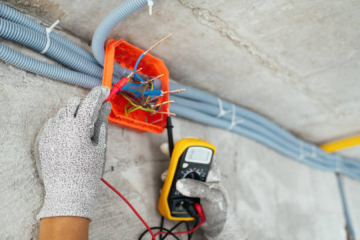Ruby on Rails is an ideal web development framework that enables developers to build outstanding applications. Despite the effectiveness and prevalence of its use, it remains very much susceptible to security threats. The developers themselves need to be on the lookout and prevent any invasions on your apps.
Why Prioritize Rails Security?
The first question might be, why the specific focus on Rails? The answer lies in the very definition of web development. The web applications under consideration are permanently connected to the internet, so they are vulnerable to different types of attacks.
Rails, being highly popular and open-source, has well-documented vulnerabilities that, if not addressed, can be exploited. It’s imperative to not only fix these vulnerabilities but to adopt a mindset of security-first in the development process.
When you are looking to hire Ruby on Rails developers, it’s essential to choose those who are well-versed in the best security practices. Hiring a developer who places value on security can greatly lower the probability of the security of your app being breached.
Understanding Common Rails Security Threats
To protect your application, you need to understand what you are protecting it against. Here are some of the most common security threats to Rails applications:
- Cross-Site Scripting (XSS)
This occurs when an attacker injects malicious scripts into content being sent to a web browser.
- SQL Injection
This involves an attacker inserting a SQL query into the input data from the client to the application, with the intent to run malicious SQL commands.
- Cross-Site Request Forgery (CSRF)
In this attack, the attacker tricks the victim into submitting a malicious request.
- Insecure Direct Object References
This allows an attacker to access the database directly, potentially accessing information they shouldn’t.
- Session Hijacking
Attackers can exploit session IDs that are exposed, poorly protected, or predictable to impersonate a thisvid.
Essential Security Practices for Rails
- Regularly Update Rails and Dependencies
One of the simplest yet most effective security measures is to keep your Rails version and all your gems updated to the latest versions. Updates bring new releases and also contain fixes for security issues present in the current system.
- Use Built-in Security Features
Rails comes with several built-in security features that, when properly used, significantly boost your app’s security:
- Active Record Validations
Ensures only valid data is there in your database.
- CSRF Protection
Rails has built-in mechanisms to protect against CSRF attacks, which should be enabled.
- Secure Passwords
Use has_secure_password in your Rails models to securely hash and store user passwords.
- Security Audits Regularly
Regular audits of your codebase can help catch vulnerabilities before they become serious problems. Tools like Brakeman can analyze your Rails application for security vulnerabilities automatically.
- Implement Strong Authentication and Authorization
Authentication (identifying users) and authorization (granting access to resources) are critical components of web app security. Consider using gems like Devise for powerful authentication systems and CanCanCan or Pundit for authorization.
- Encrypt Sensitive Data
Encryption has become crucial in shielding data such as user passwords and their details from unauthorized access. Ensure that data is encrypted both in transit (using HTTPS) and at rest.
- Secure File Uploads
If your application allows file uploads, ensure they are secure. Validate file types, scan for malware, and never store files in public directories.
- Monitor and Log Activity
Keeping logs of user activity can help you understand normal behavior and spot anomalies that may indicate a security breach. There are tools such as Lograge that can assist in having more clean and useful logs.
Conclusion
Rails is very secure and getting more secure with time, but this is very important to ensure your Rails application is secured at all times. By implementing the best security practices and implementing them continuously, conducting periodic reviews of applications, and encouraging your development team to think of security as a priority, you can reduce the risks associated with security problems considerably.



